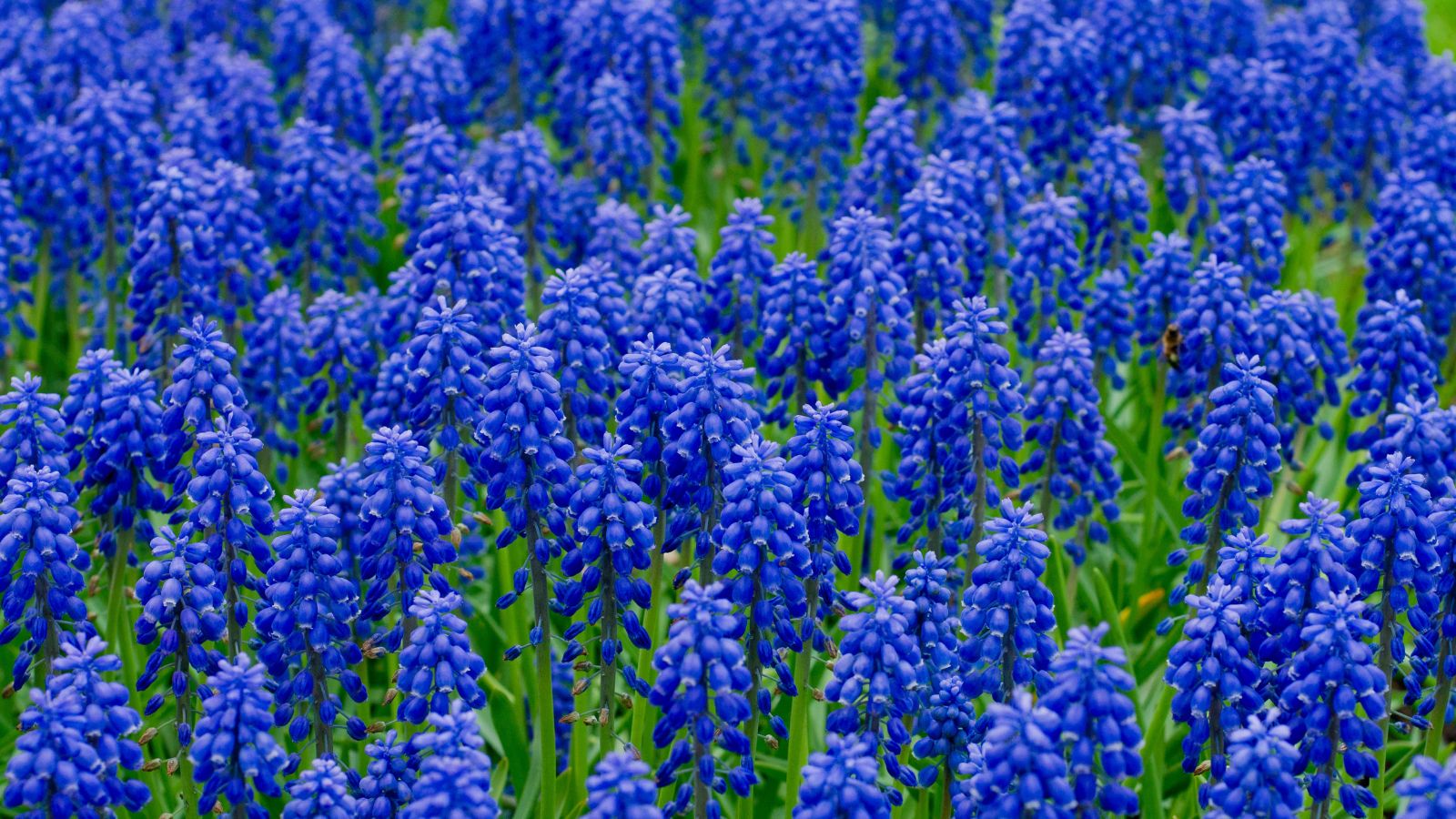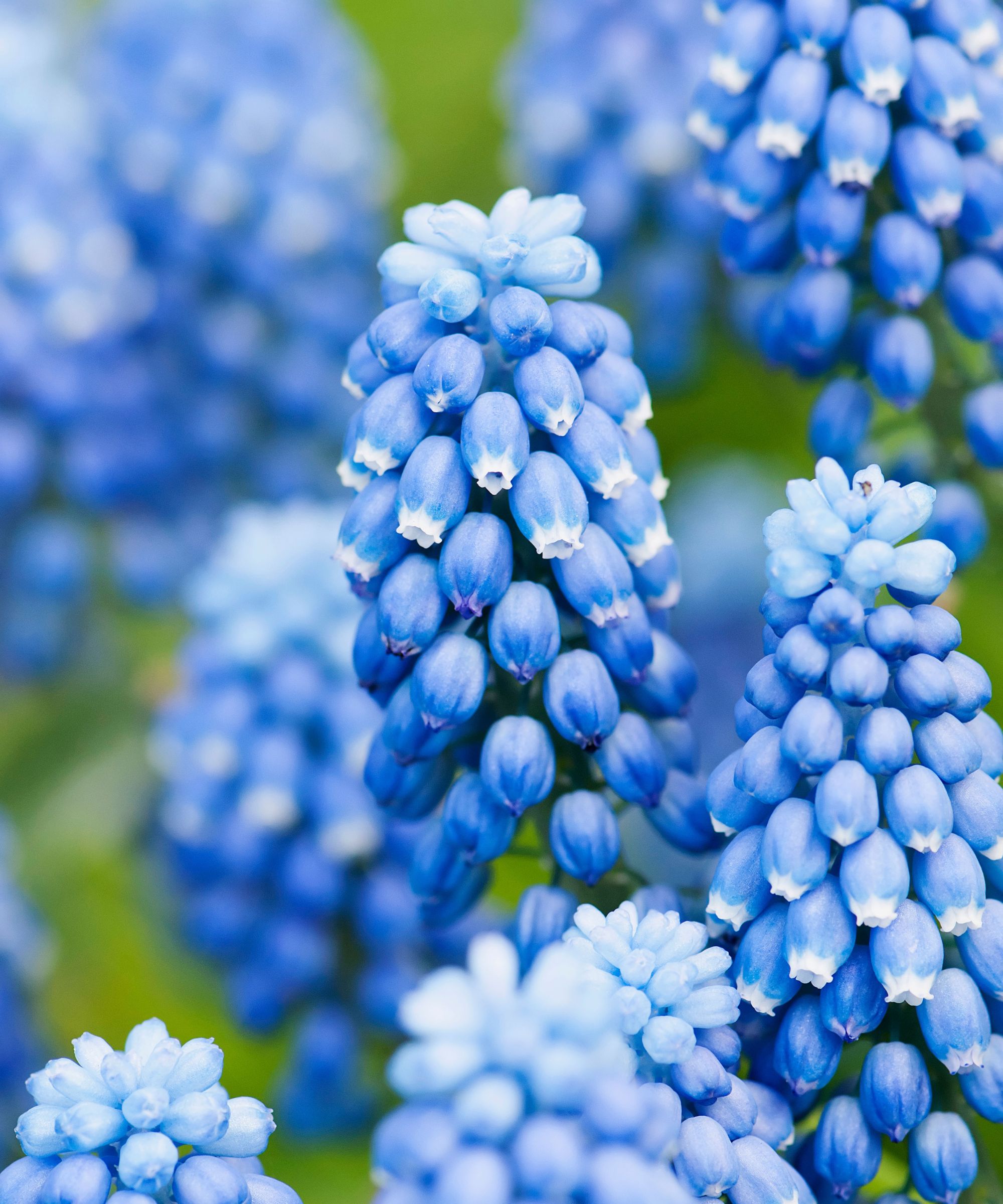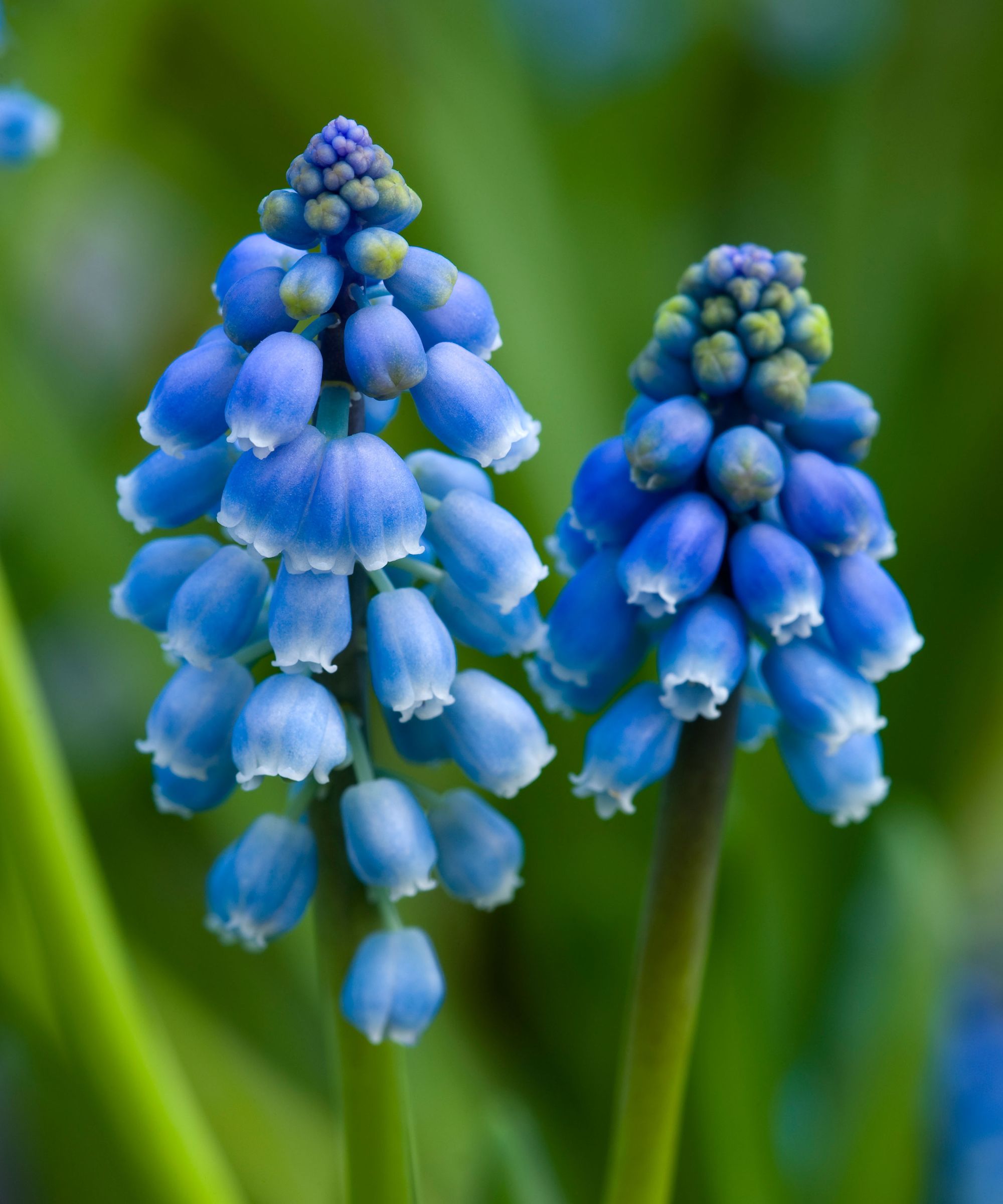How to grow muscari – professional tips for cultivating these these low-maintenance bulbs, for effortless carpets of indigo flowers in springtime
Vibrant muscari is so easy to grow you can virtually ignore it


Muscari, also known as grape hyacinths, are beautiful springtime flowers that hail from Europe and Asia. These bulbs produce clusters of delicate, bell-shaped blooms in shades of indigo blue, white, pink, lavender, or sometimes yellow, ideal for creating a stunning seasonal display in any garden.
Known for their resilience and low-maintenance nature, muscari are the perfect choice for gardeners seeking vibrant color from spring bulbs year after year without a lot of fuss.
In this guide, our experts share the growing habits and care guide to equip you with all the knowledge to keep this plant thriving.
Growing habits of muscari plants

Hardiness zones: They thrive in climates in USDA hardiness zones 4 to 8.
Size at maturity: 'Fully grown muscari plants typically reach a height of six to nine inches and a width of three to six inches and produce dense clusters of small, bell-shaped flowers,' says Nikki Bruner, the plant expert at Perfect Plants Nursery.
Growing habits: 'Muscari naturalize easily and will form clumps on their own over time,' explains Tammy Sons, horticulturist and founder and CEO of TN Nursery. 'This makes them suitable for rock gardens, borders, or even containers if you'd like to grow them in more closed quarters.'
Blooming: 'One of the best things about muscari is its perennial nature; plant it once, and it will return year after year, quietly multiplying without becoming invasive,' says Peggy Anne Montgomery, horticulturist at Flower Bulb.
Design expertise in your inbox – from inspiring decorating ideas and beautiful celebrity homes to practical gardening advice and shopping round-ups.
The blooming times of this plant vary depending on the region, with flowers emerging from early March to late April, and blooming earlier in warmer climates. The flowers typically last for three to four weeks.
Muscari require a cold winter period to bloom, so unusually warm winters can disrupt their flowering cycle the following spring. When grown in their ideal hardiness zones, they don’t need extra winter care, however, if winter temperatures rise unusually high or fluctuate significantly, the plants may struggle to bloom properly.
Foliage: Grass-like leaves appear in late summer or early fall and should be left in place until spring. The foliage provides essential nutrients for the bulbs to support healthy growth and blooming.
Self-seeding: Muscari have a self-seeding habit that can lead to uncontrolled spreading, especially when planted near other crops. To manage their growth, they are often planted in containers, which help prevent them from overtaking nearby plants.

Nikki Bruner is the marketing manager at Perfect Plants Nursery. With a passion for plants and expertise in marketing, Nikki combines her knowledge of the nursery industry with her creative thinking to promote and highlight the exceptional offerings of Perfect Plants Nursery. She is dedicated to ensuring customer satisfaction and providing valuable insights for plant lovers.

Tammy Sons has decades of experience in horticulture. She is the founder and CEO of TN Nursery, which is recognized as the go-to place for some of the world's largest brands.

Peggy Anne has over 30 years of experience in horticulture, with a strong background in native plant research, public relations, and sales.
The ideal growing conditions for muscari

Soil: 'Muscari are quite adaptable and can thrive in various types of soil, but they prefer moist, well-drained soil and can thrive in sandy blends,' says Nikki Bruner. 'Ensure that the soil is well-draining to prevent waterlogging, which can lead to root rot.' And while they are adaptable to various pH levels, they grow best in neutral to slightly acidic soil.
Planting: 'Plant these bulbs in the fall, three to four inches deep in well-drained soil,' advises Tammy Sons.
'For an even more dramatic spring display, consider planting three bulbs per hole,' recommends Peggy Anne Montgomery. 'They’ll create a lush, robust cluster of blooms.'
Light: These plants flourish in full sun but can also tolerate partial shade. Plant them in the fall in a spot that gets plenty of spring sunlight, as areas shaded during the summer may be sunnier in early spring before nearby trees fully leaf out.
Watering: Water muscari when the soil starts to dry, but be careful not to overwater, as this can lead to bulb rot. In the spring, they appreciate consistent moisture but need the soil to dry out slightly as the season progresses. Typically, watering once a week is sufficient, depending on rainfall.
Fertilizing: Muscari are generally low-maintenance and typically don’t require fertilization. However, Tammy Sons advises, 'If you choose to fertilize muscari, it should be done sparingly, or not at all.' That said, they can benefit from a light annual application of bone meal in the fall. Use about a quarter cup per 100 square feet of soil to encourage healthy growth and vibrant blooms.
Pruning: Allow the grass-like foliage to remain through the fall and winter to nourish the bulbs for spring blooms. Once the leaves start to yellow in the summer, you can trim them back if you prefer a tidier look, though this is more of an aesthetic choice than a necessity.
Alternatively, Tammy Sons suggests letting the foliage die back naturally, which is a low-maintenance option that supports the plant's natural growth cycle. To encourage more flowers the following year, remove green seed pods after the plant finishes flowering in spring.
FAQs
What methods can you use to propagate a muscari?
Muscari can be propagated through seeds or by dividing the bulbs. Although this plant spreads naturally and often doesn’t require intentional propagation, propagation is useful for intentionally creating new plants in other areas or filling out a garden bed.
As plant expert Nikki Bruner suggests, 'Once the flowers have finished blooming, you can deadhead the spent blossoms to promote future growth.'
If you want to propagate muscari from seeds, you’ll need to collect them from the pods once the flowers have finished blooming. Keep in mind, though, that this is a slow process – it can take several years for the plants to start flowering. Because of this, most people don’t use seeds as their go-to method. If you do decide to try it, spring is the best time to sow them for the best results.
Most gardeners prefer propagating muscari through division because it’s a faster and more reliable method. Simply dig up the bulbs, separate them, and replant them wherever you want to grow new plants. The best time to do this is in the fall when the plants are dormant.
Which pests usually target muscari?
Muscari are pretty tough plants, but they can occasionally attract pests like aphids and spider mites. Thankfully, these pests rarely become a big problem. If you do spot them, a strong spray of water from a garden hose is often enough to knock them off and keep your plants healthy.
The bigger concern, however, is a yellow mosaic virus, which can show up as a green pattern on the leaves, stunted growth, or shorter flower stalks. This virus is usually spread by spider mites that infect the bulbs, so it’s important to deal with any mites as soon as you notice their presence. Unfortunately, once a bulb is infected with yellow mosaic, it’s unlikely to survive, so you should remove and destroy any affected plants immediately to prevent the virus from spreading.
Remember, that since grape hyacinth tends to spread quickly, it might outgrow its pot during the growing season. To give your muscari plenty of room to grow, either move the plant to a larger container, or, as Tammy Sons recommends, take the cluster of bulbs, gently separate them, and replant them in fresh soil using new containers.

Lola Houlton is a news writer for Homes & Gardens. She has been writing content for Future PLC for the past six years, in particular Homes & Gardens, Real Homes and GardeningEtc. She writes on a broad range of subjects, including practical household advice, recipe articles, and product reviews, working closely with experts in their fields to cover everything from heating to home organization through to house plants. Lola is a graduate, who completed her degree in Psychology at the University of Sussex. She has also spent some time working at the BBC.